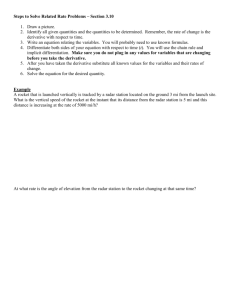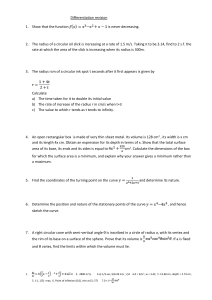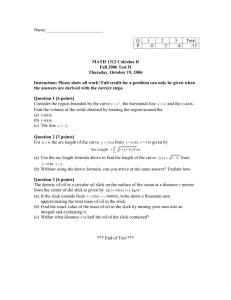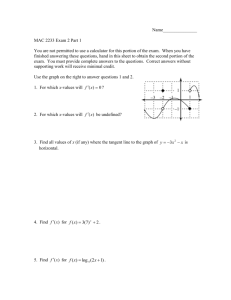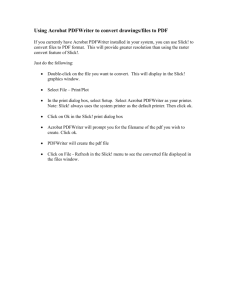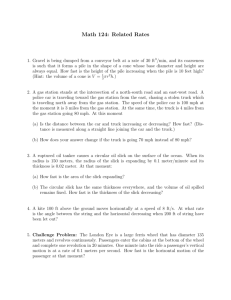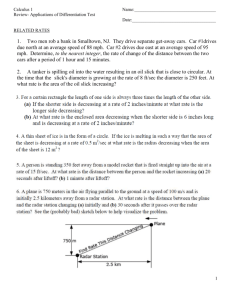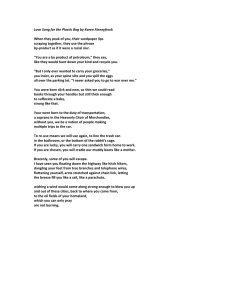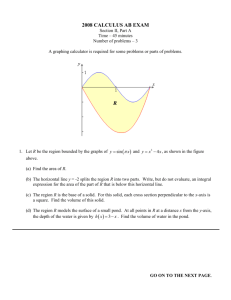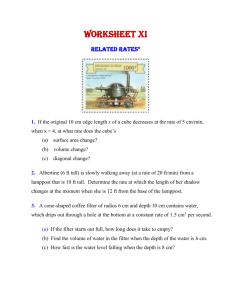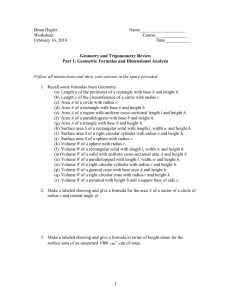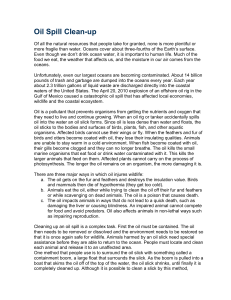Compute related rates
advertisement
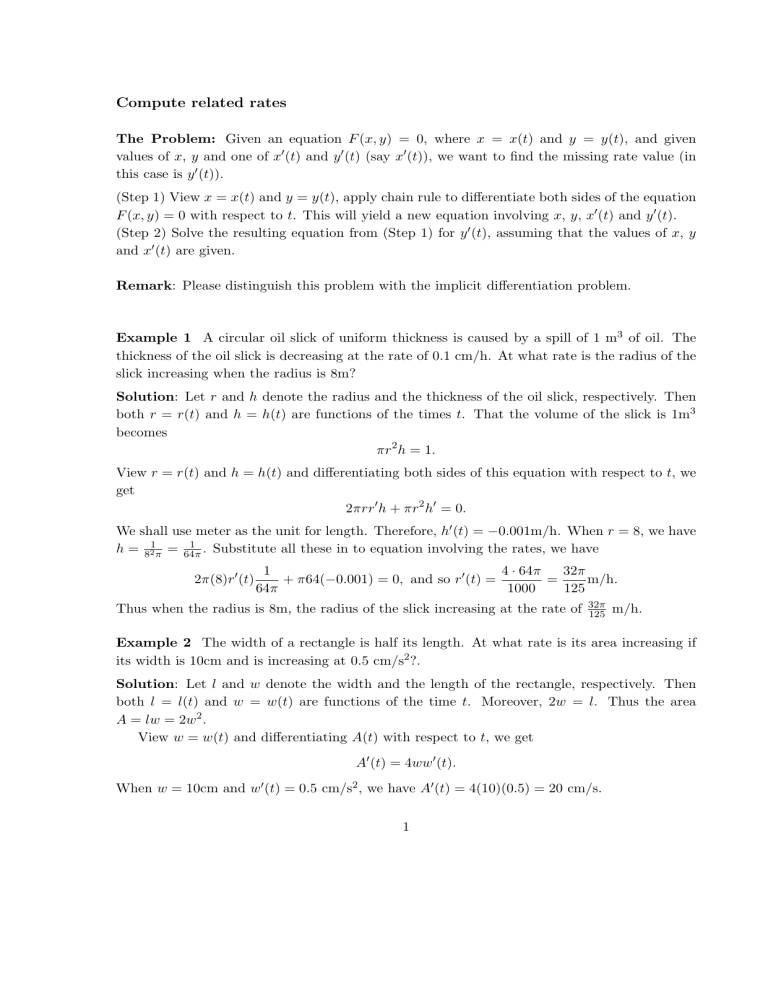
Compute related rates The Problem: Given an equation F (x, y) = 0, where x = x(t) and y = y(t), and given values of x, y and one of x0 (t) and y 0 (t) (say x0 (t)), we want to find the missing rate value (in this case is y 0 (t)). (Step 1) View x = x(t) and y = y(t), apply chain rule to differentiate both sides of the equation F (x, y) = 0 with respect to t. This will yield a new equation involving x, y, x0 (t) and y 0 (t). (Step 2) Solve the resulting equation from (Step 1) for y 0 (t), assuming that the values of x, y and x0 (t) are given. Remark: Please distinguish this problem with the implicit differentiation problem. Example 1 A circular oil slick of uniform thickness is caused by a spill of 1 m3 of oil. The thickness of the oil slick is decreasing at the rate of 0.1 cm/h. At what rate is the radius of the slick increasing when the radius is 8m? Solution: Let r and h denote the radius and the thickness of the oil slick, respectively. Then both r = r(t) and h = h(t) are functions of the times t. That the volume of the slick is 1m3 becomes πr2 h = 1. View r = r(t) and h = h(t) and differentiating both sides of this equation with respect to t, we get 2πrr0 h + πr2 h0 = 0. We shall use meter as the unit for length. Therefore, h0 (t) = −0.001m/h. When r = 8, we have 1 h = 821π = 64π . Substitute all these in to equation involving the rates, we have 2π(8)r0 (t) 1 4 · 64π 32π + π64(−0.001) = 0, and so r0 (t) = = m/h. 64π 1000 125 Thus when the radius is 8m, the radius of the slick increasing at the rate of 32π 125 m/h. Example 2 The width of a rectangle is half its length. At what rate is its area increasing if its width is 10cm and is increasing at 0.5 cm/s2 ?. Solution: Let l and w denote the width and the length of the rectangle, respectively. Then both l = l(t) and w = w(t) are functions of the time t. Moreover, 2w = l. Thus the area A = lw = 2w2 . View w = w(t) and differentiating A(t) with respect to t, we get A0 (t) = 4ww0 (t). When w = 10cm and w0 (t) = 0.5 cm/s2 , we have A0 (t) = 4(10)(0.5) = 20 cm/s. 1
